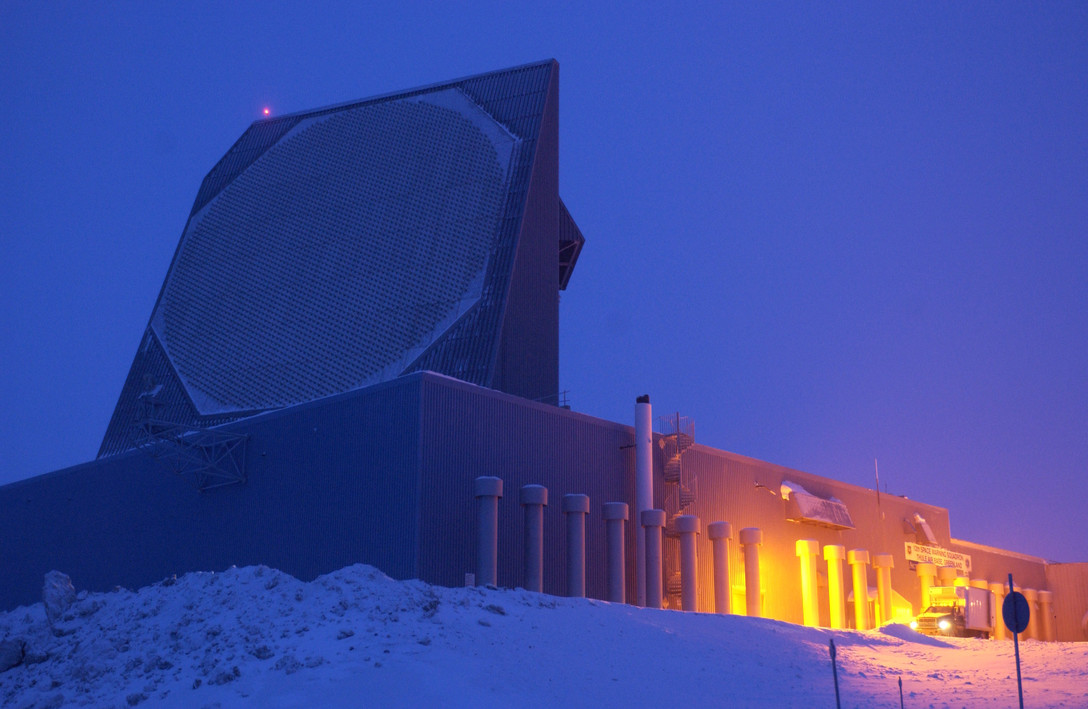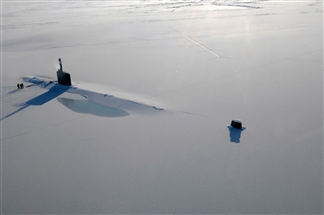 Photo Credit: US Air Force
Photo Credit: US Air Force
National Security Implications of a US Strategic Port in the Arctic
In 2018 the Trump administration released its foundational defense strategy document – the 2018 National Defense Strategy (NDS). The 2018 NDS represented a shift in US defense priorities for the first time since the attacks of 9/11, as great power competition supplanted counterterrorism as the primary goal of US defense strategy.
The document specifically listed two states – Russia and China – as the states with which the US would be competing. US-China competition has played out very publicly in the form of a trade war. US-Russia competition has come in other forms, primarily consisting of Russian involvement in geopolitical proxy conflicts like the one in Syria, support for Venezuelan President Nicolas Maduro, and meddling in the US election system.
One arena where this competition between Moscow and Washington is heating up is the Arctic, a region which itself is also literally heating up.
Climate Change & Russia in the Arctic
As global temperatures rise due to climate change, the Arctic is experiencing profound effects. The biggest impact of warming comes in the form of diminishing levels of sea ice. With sea ice melting, Arctic waterways become navigable for longer stretches of the year. Increased access to Arctic waterways provides economic and energy benefits, such as shorter commercial shipping routes and access to a large percentage of the world’s hydrocarbon reserves.
The Arctic has always been strategically important for Russia, especially given the extensive Arctic coastline Russia has to the north. Russia has heavily invested in the Arctic, as it views the region as vital to its economic and military interests. One form of investment has come in the building of icebreakers. By 2035 Russia plans to operate thirteen heavy-duty icebreakers, nine of which would be nuclear powered.
Russia announced a five-year plan that would bring in over $80 billion in investment in the Arctic. Economic investment in the Arctic has also led to military investment. According to ASP COO Andrew Holland, “The larger military outposts are meant as an easy form of saber rattling, as well as a way to provide protection for the very large amount of investment into the Northern Fleet, based out of Murmansk.”
Washington Joins the Party

Photo credit: US Department of Defense
Russia’s investment in the Arctic has given them an advantage over the US, but recently the US has taken steps to show they are catching up. The latest move to increase US presence in the Arctic comes in the 2020 National Defense Authorization Act (NDAA) that passed a vote in the Senate but has not passed in the House. The NDAA – the bill that funds the Department of Defense – stipulates that a new strategic port must be identified and designed in the Arctic Ocean. The NDAA directs the Secretary of Defense to work with relevant organizations, agencies, and departments to submit a report to Congress identifying possible locations for the port before selecting a final site.
The economic benefits of a stronger US presence in the region could be enormous. A Senate Armed Services Committee report on the Arctic region identified not only large oil and gas reserves, but also an “abundance of uranium, rare earth minerals, gold, diamonds and millions of square miles of untapped resources.” Access to these rare earth minerals could be especially important for the US, given their role in US national security, if the trade war with China continues.
An increased presence in the region is also important to US national security interests. The 2019 US Arctic Strategy identifies three risks to US national security interests in the Arctic.
First, the Arctic serves as an avenue for possible attack on the US homeland. Russia – and China – are both pursuing activities and capabilities that pose a threat to the US homeland. Environmental factors, such as coastal erosion and permafrost thaw also pose risks to existing DoD installations.
Second, Russia – again with China – is challenging the rules-based international order that also applies to the Arctic. Russia violates international law by regulating maritime operations in the Northern Sea Route and has reportedly threatened to use force against vessels that don’t abide by Russian regulations.
Finally, the Arctic is vulnerable to strategic spillover from tensions, competition, or conflict arising in other regions of the world.
Establishing a new strategic port in the Arctic will bolster US national security. Experts say, “The plus side of putting a port up in [the Arctic] is that you don’t have to do a whole hell of a lot to force the Russians to put a lot of resources up there to counter it. The cost of maintaining, say, an airbase in the Arctic is enormous. And those are resources that could be used otherwise to threaten, for example, countries in Europe.”
The building of a strategic port in the Arctic, coupled with increased investment in icebreakers, the reactivation of 2nd Fleet to operate in the Arctic, and the presence of a carrier strike group north of the Arctic Circle is a way to signal to Russia that the US is becoming more and more invested in the Arctic.





